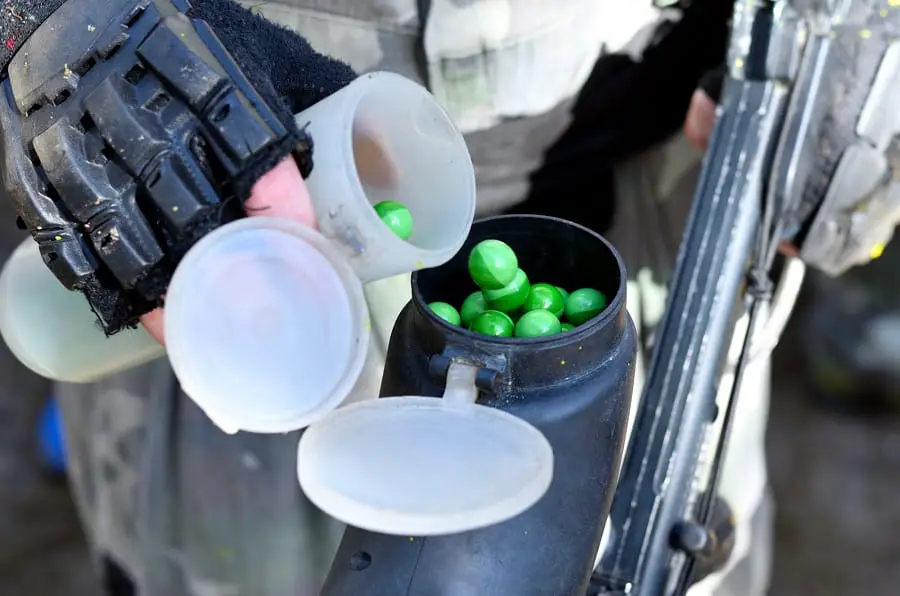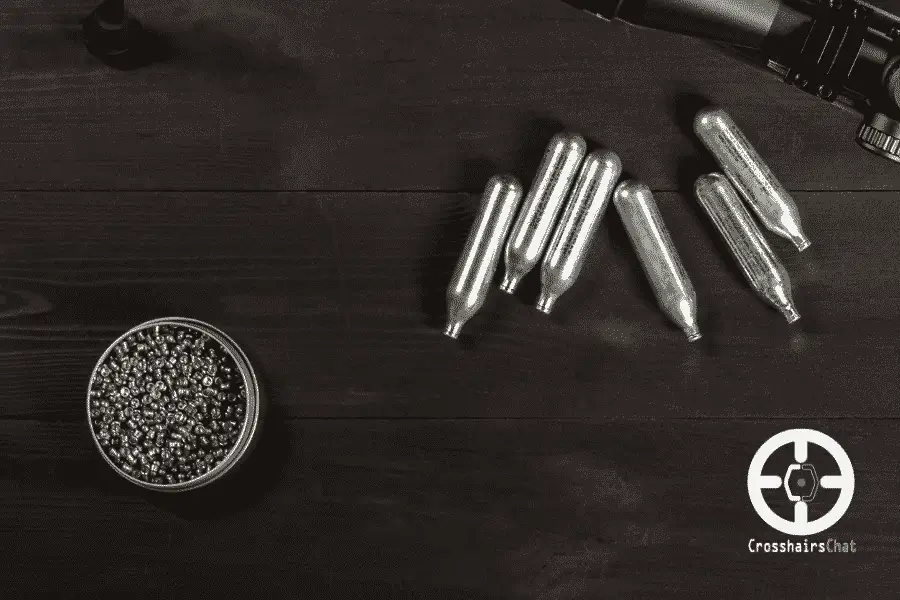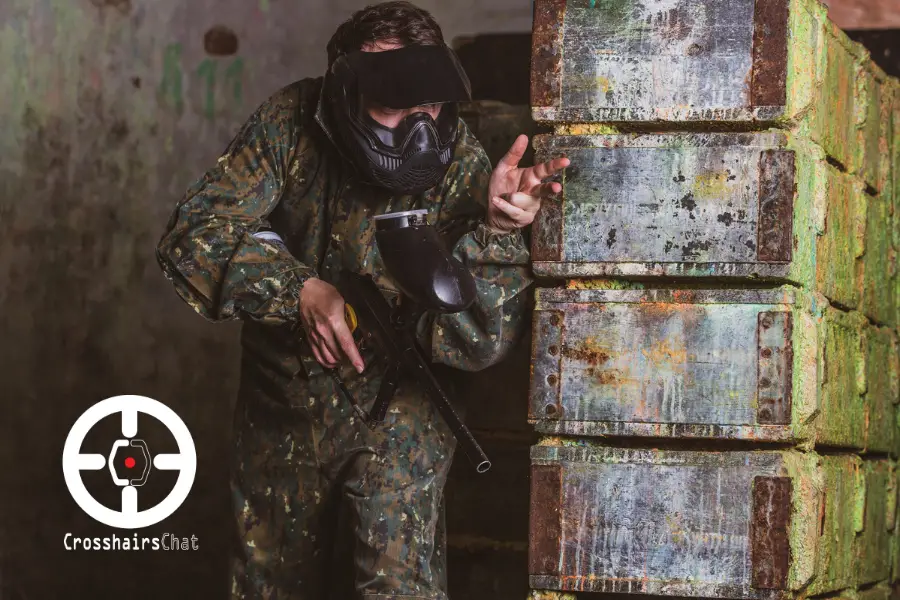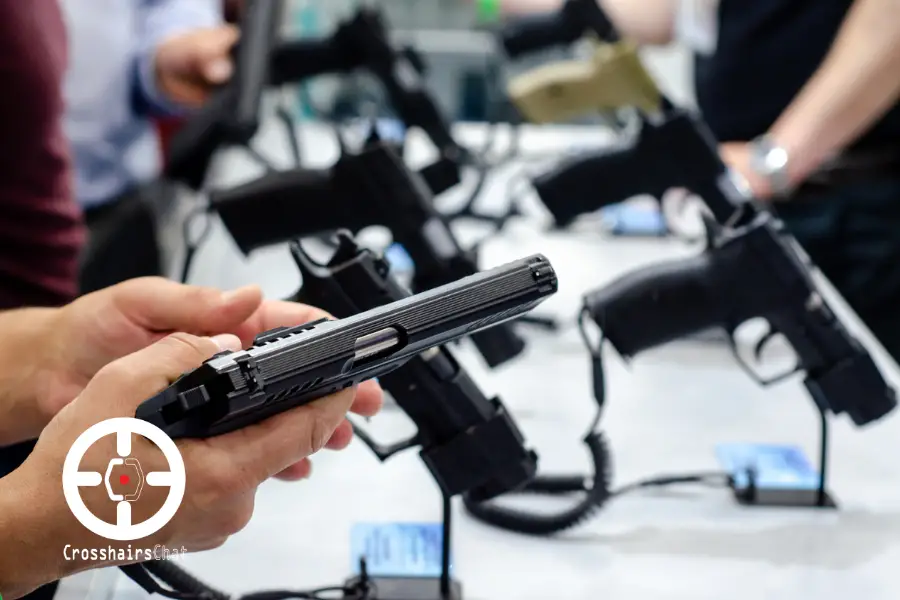When we start learning about paintball air tanks & pressurized air options, the main choices are CO₂ versus High-Pressure Air (HPA). Which is better? They both offer different pros and cons that we will look at today.
Both pressurized sources offer enough power to push a paintball out of the barrel effectively. However, based on different qualities between the two and the marker in use, CO₂ or HPA could emerge as the clear winner for a player’s individual needs.
Today, let’s dive into paintball tanks and reach some clear verdicts.
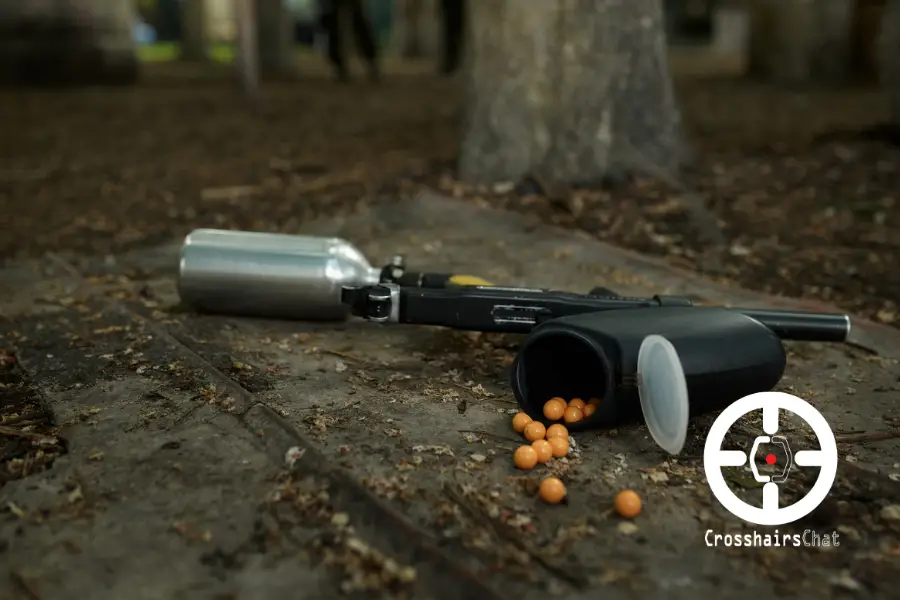
Which Is Better for Paintball, Compressed Air or CO₂?
The first question beginner paintballers often ask is, “Is compressed air better than CO2 for paintball?” Neither is better for every situation, and both offer different qualities that work better in some situations and under certain circumstances.
Paintball markers usually accept one compressed gas source or the other, so the decision about CO₂ versus HPA starts at the beginning when buying the first pieces of equipment, such as a marker.
What to Know About CO₂ for Paintball
CO₂ stands for Carbon Dioxide, a ubiquitous gas used for many purposes. CO₂ was the propellent of choice when paintball emerged as a new sport, but HPA has grown into a serious rival and perhaps already taken over the market share.
One of the most important facts we have to look at is that electronic guns have stormed the market with high-end models, and CO₂ does not work with electronics because it causes premature wear.
As a result, CO₂ is the compressed gas of choice for low-end mechanical markers, not the impressive, new electronic ones.
CO₂ is denser than air and sits in the tank in liquid form, and the liquid becomes cold upon release and expansion into a gas. The temperature fluctuations of liquid CO₂ are not conducive to cold climates, such as the northern U.S. and Canada. When the liquid expands and returns to its gaseous state, pressure forms, and a paintball shoots out of the barrel.
Winter conditions where the liquid has already become cold increase the likelihood of a malfunction.
Due to sitting in a tank in liquid form, weight is the only indicator of how much CO₂ remains, not very practical in-game. A pressure gauge does not work, and CO₂ offers essentially the same pressure from beginning to end, unlike HPA, which loses pressure.
Which hopper you choose does not affect which propellant you use.
CO₂ appears cheaper at first but quickly becomes the more expensive option when playing paintball. CO₂ refills at a field cost money, but HPA refills are free for players. CO₂ refills tend to cost around $6. The initial tank might cost $30, so after ten refills the total cost comes to $90, $10 more than buying an HPA tank that gets free refills.
Pros
- Delivers the same power throughout the tank’s duration
- Cheaper at first for beginners
- More compact and light than HPA for the same number of shots
- Easy to refill at gas and paintball stores and welding suppliers.
- Low price matches beginner-level low-end markers
Cons
- More expensive than HPA in the long term due to refills
- Unreliable in cold weather
- Cannot use a pressure gauge, can only gauge by weight
- No partial refills like HPA
- Damages electronics
What to Know About High-Pressure Air (HPA)
CO₂ is a good propellant source, but there are some drawbacks. Manufacturers began moving toward HPA to solve some of the CO₂ problems.
HPA tanks store air at high pressures like 3000 psi and use a regulator with a gauge to release the air at approximately 850 psi, similar to CO₂.
HPA delivers the same performance in cold and warm weather. The tank sizes are more customizable to offer alternative shooting capacity.
The initial purchase of an HPA tank is expensive, around $80, but at a paintball field, most companies have an air compressor that offers free refills to players. Essentially, while enjoying free refills, the HPA tank price does not exceed the initial $80 investment.
Paintball players can partially refill an HPA tank, while CO₂ users have to wait for a tank to empty and then pay for a refill. The downside to HPA is the difficulty of getting refills away from the paintball field.
Pros
- Consistent pressure – rapid-firing or cold weather barely make a difference
- Free refills when playing
- The marker stays dry
- Works with electronic markers
- A gauge provides an instant pressure reading.
Cons
- Fewer options to get refills away from a paintball field
- Larger initial investment
- An equal number of shots as CO₂ in a larger and heavier tank
Can You Fill Up a Paintball Tank With an Air Compressor?
The unfortunate answer is yes and no. Yes, you can put air in a paintball tank with an air compressor found at a tire shop.
No, the amount of air will not suffice to play much paintball with that tank. Air compressors for domestic use work on car tires that operate around 180 psi. Paintball tanks come in two standard sizes, 3000 psi and 4500 psi.
Creative paintball enthusiasts have found a clever workaround. A scuba tank operates at similar pressure, and a simple adapter connects the two tanks, an easy, cheap solution.
How Much Does It Cost to Fill Up a Tank?
As touched on in a previous section, HPA refills are often free at paintball fields for players. CO₂ is a product the field purchases and sells to players for about $6 per refill. CO₂ tanks initially cost considerably less than HPA tanks, but several refills later, the price catches up to HPA and continues to climb.
What Psi Should My Paintball Gun Be?
Picking the right psi is an objective choice. The shot performance in a match will be about the same. However, a 4500 psi tank offers more shots without a refill. The bigger the tank, the higher the price we pay.
A 3000 psi tank still offers a lot of shots before the air runs out, and the tank is lighter and cheaper.


